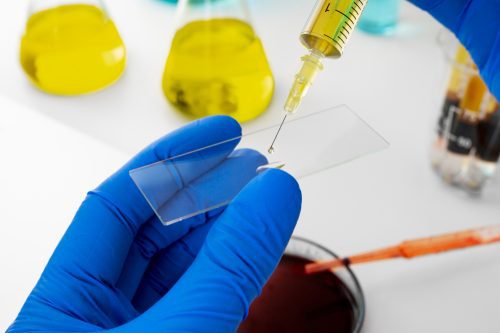
Comet Assay to Study Antimutagenic Activity of Different Compounds
Exploring the potential of Comet assay for studying Antimutagenic Activity
About Program:
This progrsm is designed to provide participants with a comprehensive understanding of the Comet Assay technique and its applications in studying DNA damage and repair. Attendees will be introduced to the principles behind Comet Assay, learn the protocol for performing the assay. The program will also cover advanced topics, including modifications and improvisations of the technique, and its applications in various research fields. By the end of the program, participants will have the knowledge and skills to apply Comet Assay to their own research and take it to the next level.
Aim: The aim of the program is to educate participants on the Comet assay technique and how it can be used to study the antimutagenic activity of different compounds.
Program Objectives:
- Introduce participants to the concept of antimutagenicity and the role of comet assay in evaluating antimutagenic activity of different compounds.
- Explain the principles of comet assay and the various types of comet assays used to study DNA damage and repair.
- Describe the different types of mutagens and their potential health effects, and explain how comet assay can be used to evaluate the potential of different compounds to prevent or mitigate DNA damage caused by mutagens.
- Provide an overview of the different compounds with potential antimutagenic activity, including natural and synthetic compounds, and explain the mechanisms by which they may prevent or mitigate DNA damage.
- Demonstrate the techniques and protocols for performing comet assay, including sample preparation, gel electrophoresis, and imaging and analysis of comet tail lengths.
- Provide opportunities for participants to practice performing comet assay and analyzing results, and to troubleshoot common issues that may arise during the assay process.
- Discuss the strengths and limitations of comet assay as a tool for evaluating antimutagenic activity, and how it can be used in conjunction with other methods to provide a more comprehensive evaluation of compound activity.
- Facilitate discussions on how to design and conduct studies to evaluate the antimutagenic activity of different compounds, and how to interpret and communicate results.
- Foster a collaborative learning environment that encourages participants to share their experiences and insights, and learn from each other.
- Equip participants with the knowledge and skills they need to apply comet assay to their own research projects and evaluate the potential antimutagenic activity of different compounds.
What you will learn?
Session 1: Introduction to Comet Assay
- What is Comet Assay?
- Applications of Comet Assay
The Principle of Comet Assay
- Why is Comet Assay important?
- Theoretical background of Comet Assay
Protocol for Performing Comet Assay
- Sample preparation
- Electrophoresis
- Visualization and analysis of DNA damage
Q&A Session
Session 2: Analysis of Results of Comet Assay
- Interpretation of Comet Assay data
- Quantification of DNA damage
Uses of Comet Assay
- How Comet Assay is used in toxicology and genotoxicity studies
- Future applications of Comet Assay
Modifications or Improvisations of Comet Assay
- Various modifications and improvements to the original Comet Assay protocol
- Advantages and limitations of different modifications
Q&A Session
Fee Plan
Intended For : Graduates, Post Graduates, Research Scholars, Academicians, Industry Professionals, Genotoxicologist, Environmental Toxicologist, People from Cancer research, Radiation biology, Drug discovery and development, Aging and longevity research, Agricultural biotechnology, Food safety and quality assurance, Veterinary medicine, Nanotoxicology Domains
Career Supporting Skills
Program Outcomes
- Participants will have a clear understanding of the concept of antimutagenicity and the role of comet assay in evaluating the potential antimutagenic activity of different compounds.
- Participants will be able to describe the principles of comet assay and the different types of comet assays used to study DNA damage and repair.
- Participants will be able to identify the different types of mutagens and their potential health effects, and understand how comet assay can be used to evaluate the potential of different compounds to prevent or mitigate DNA damage caused by mutagens.
- Participants will be able to describe the different compounds with potential antimutagenic activity, including natural and synthetic compounds, and explain the mechanisms by which they may prevent or mitigate DNA damage.
- Participants will be able to perform comet assay and analyze results, and troubleshoot common issues that may arise during the assay process.
- Participants will understand the strengths and limitations of comet assay as a tool for evaluating antimutagenic activity, and how it can be used in conjunction with other methods to provide a more comprehensive evaluation of compound activity.
- Participants will be able to design and conduct studies to evaluate the antimutagenic activity of different compounds, and interpret and communicate results.
- Participants will have gained insights into the current state of research on antimutagenic compounds, and will have opportunities to network with other program participants and expert speakers to foster ongoing learning and collaboration.
- Participants will be able to apply the knowledge and skills gained in the program to their own research projects, and will be equipped with the tools they need to evaluate the potential antimutagenic activity of different compounds using comet assay.
- Participants will have developed critical thinking skills and problem-solving skills, and will be able to think creatively about how to apply comet assay to their own research questions and challenges.
